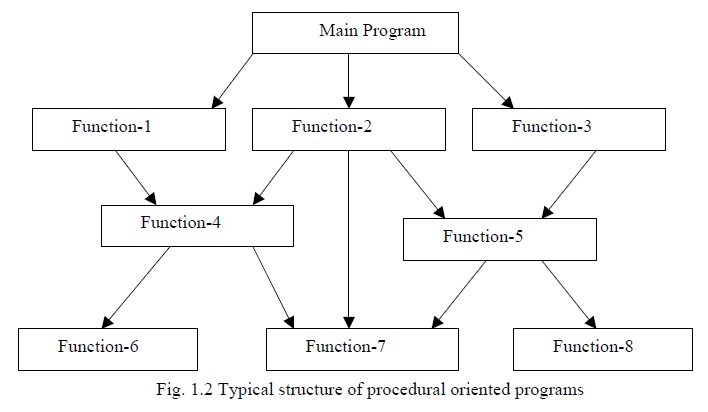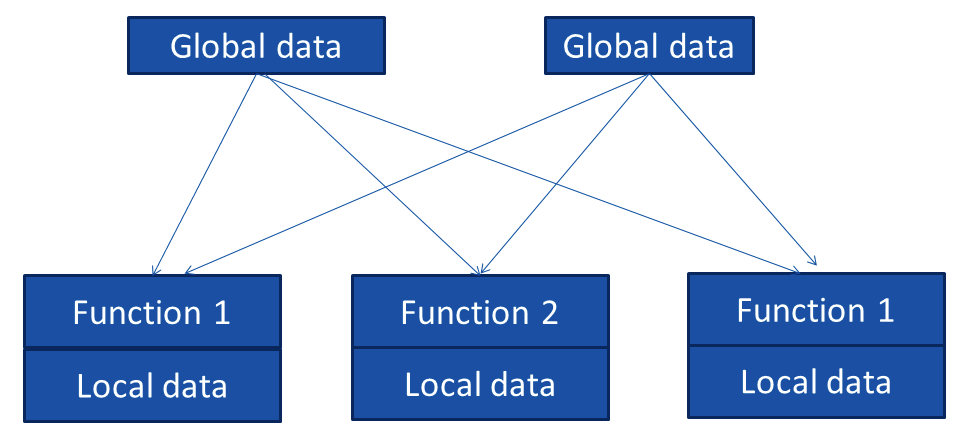- Programming in the high-level languages such as COBOL, FORTRAN, C, etc. is known as procedure-oriented programming.
- Procedure-oriented programming basically contains group of instructions known as function. There are multiple functions into the program.
- In below figure we have divided our program into multiple functions.
- We use flowchart or algorithm to show how the program is executed from one instruction to other instruction.
- It doesn’t emphasize on the data.
- In a multi-function program we use global variable to communicate between two functions.
- Global variable can be use by any function at any time while local variables are only used within the function.
- But it creates problem in large program because we can’t determine which global variables (data) are used by which function.
- Also global variables are accessed by all the function so any function can change its value at any time so all the function will be affected.
Characteristics of procedure-oriented programming language:
- It emphasis on algorithm (doing this ).
- Large programs are divided into smaller programs known as functions.
- Function can communicate by global variable.
- Data move freely from one function to another function.
- Functions change the value of data at any time from any place. (Functions transform data from one form to another.)
- It uses top-down programming approach.


